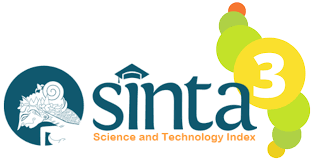DISKRESI KEPOLISIAN PADA PENGAWALAN KONVOI KOMUNITAS DALAM MASA PANDEMI DI WILAYAH HUKUM POLDA METRO JAYA
DOI:
https://doi.org/10.36526/sosioedukasi.v11i1.1884Keywords:
Crowd Control, Covid-19 Pandemic, Police Discretion, Public Order, Procedural Justice TheoryAbstract
The Covid-19 pandemic has affected the way of policing due to social restrictions, but then gathering and expressing opinions in public cannot be prevented, because this is a part of human right. Crowd control during the pandemic, one of which was escorting community convoys, then became a challenging task for the police. This paper aims to analyze the application of police discretion in escorting community convoys during the Covid-19 pandemic. Qualitative methods were used in the development of this research, by conducting literature studies and interviews in collecting data. The analysis in this study is based on discretionary theory and procedural justice theory. The results of the analysis show that currently policing is shifting to adjust to pandemic conditions, one of the important elements is the expansion of the police's discretionary authority in handling pandemics in the field related to law enforcement, especially regarding social restriction policies. This discretion then needs to be applied in public order management and crowd control. The way that the police can do in crowd control is to develop intense communication with the community to create dialogue-based solutions that the community will voluntarily comply with. The implementation of escorting community convoys in the jurisdiction of Polda Metro Jaya shows that the police who carry out escorts are still unable to apply discretion properly, causing discriminatory discretion and non-function discretionary deviations. This then causes public doubts about the ability of the police to exercise discretion in order to achieve justice
References
Baker, D. (2020). Public order policing approaches to minimize crowd confrontation during disputes and protests in Australia. Policing: A Journal of Policy and Practice, 14(4), 995–1014.
Bates, J. (2020). Police Departments, Sheriffs’ Offices across the U.S. Grapple with COVID-19’s Impact on Public Safety—And Their Own. TIME. https://time.com/5812833/coronavirus-police-departments/
Brooks, R., & Lopez, C. (2020). Policing in a time of pandemic: recommendations for law enforcement. COVID-19 Rapid Response Impact Initiative.
Carter, D. P., & May, P. J. (2020). Making sense of the US COVID-19 pandemic response: A policy regime perspective. Administrative Theory & Praxis, 42(2), 265–277.
Davidovitz, M., Cohen, N., & Gofen, A. (2021). Governmental response to crises and its implications for street-level implementation: Policy ambiguity, risk, and discretion during the COVID-19 pandemic. Journal of Comparative Policy Analysis: Research and Practice, 23(1), 120–130.
de Lint, W. (2005). Public order policing: A tough act to follow? International Journal of the Sociology of Law, 33(4), 179–199.
Drury, J., & Reicher, S. (2000). Collective action and psychological change: The emergence of new social identities. British Journal of Social Psychology, 39(4), 579–604.
Fakhruzy, A. (2019). Mediasi Penal dalam Penyelesaian Tindak Pidana Kekerasan dalam Rumah Tangga (Teori dan Implementasi) (Vol. 167). Duta Media Publishing.
Gofen, A. (2014). Mind the gap: Dimensions and influence of street-level divergence. Journal of Public Administration Research and Theory, 24(2), 473–493.
Gorringe, H., Stott, C., & Rosie, M. (2012). Dialogue police, decision making, and the management of public order during protest crowd events. Journal of Investigative Psychology and Offender Profiling, 9(2), 111–125.
Herbinger, P. L., & von Laufenberg, R. (2021). Policing in Times of the Pandemic. European Law Enforcement Research Bulletin, SCE 5, 251–259.
Hsb, M. O. (2021). Ham dan kebebasan berpendapat dalam UUD 1945. Al WASATH Jurnal Ilmu Hukum, 2(1), 29–40.
Hupe, P. (2013). Dimensions of discretion: Specifying the object of street-level bureaucracy research. Dms–Der Moderne Staat–Zeitschrift Für Public Policy, Recht Und Management, 6(2), 23–24.
Jones, D. J. (2020). The potential impacts of pandemic policing on police legitimacy: Planning past the COVID-19 crisis. Policing: A Journal of Policy and Practice, 14(3), 579–586.
Laufs, J., & Waseem, Z. (2020). Policing in pandemics: A systematic review and best practices for police response to COVID-19. International Journal of Disaster Risk Reduction, 51, 101812.
Lotta, G., & Santiago, A. (2017). Autonomia e discricionariedade: matizando conceitos-chave para o estado de burocracia. BIB-Revista Brasileira de Informação Bibliográfica Em Ciências Sociais, 83, 21–42.
Matarazzo, G., Fernandes, A., & Alcadipani, R. (2020). Police institutions in the face of the pandemic: Sensemaking, leadership, and discretion. Revista de Administração Pública, 54, 898–908.
Meško, G. (2021). Police, Policing and covid-19 Pandemic. European Journal of Crime, Criminal Law and Criminal Justice, 29(3–4), 183–188.
Nedzinskas, E., & Šliažienė, R. (2019). The Role of the Police in the Ensuring Public Order. Journal of Management, 2, 35.
Nur Fuady, M. I. (2020). Moderasi Beragama Pada Diskresi Kepolisian Dalam Memberantas Kriminalitas Geng Motor.
Radburn, M., Stott, C., Bradford, B., & Robinson, M. (2018). When is policing fair? Groups, identity and judgements of the procedural justice of coercive crowd policing. Policing and Society, 28(6), 647–664.
Radhitya, T. V., Nurwati, N., & Irfan, M. (2020). Dampak pandemi Covid-19 terhadap kekerasan dalam rumah tangga. Jurnal Kolaborasi Resolusi Konflik, 2(2), 111–119.
Reicher, S. D. (1996). ‘The Battle of Westminster’: Developing the social identity model of crowd behaviour in order to explain the initiation and development of collective conflict. European Journal of Social Psychology, 26(1), 115–134.
Rohman, A. (2020). Sisi Positif dan Negatif Demonstrasi Pada Negara Demokrasi Dimasa Pandemi. Binamulia Hukum, 9(2), 153–170.
Roversii, T. van H. M., & den Boeriii, M. (n.d.). ‘Wisdom of the Crowds’: Crowd Control and Intelligence Gaps During the COVID-19 Pandemic. AMERICAN INTELLIGENCE STUDIES, 11.
Sheptycki, J. (2020). The politics of policing a pandemic panic. Australian & New Zealand Journal of Criminology, 53(2), 157–173.
Stott, C., & Kumar, T. K. V. (2020). Far from the ‘madding crowd’: An Introduction to the Special Issue of Policing Crowd Events. In Policing: A Journal of Policy and Practice (Vol. 14, Issue 4, pp. 860–864). Oxford University Press.
Stott, C., Radburn, M., Pearson, G., Kyprianides, A., Harrison, M., & Rowlands, D. (2021). Police powers and public assemblies: learning from the Clapham Common ‘Vigil’during the Covid-19 pandemic. Policing: A Journal of Policy and Practice.
Tomes, N. (2010). “Destroyer and teacher”: managing the masses during the 1918–1919 influenza pandemic. Public Health Reports, 125(3_suppl), 48–62.









.png)

















